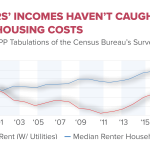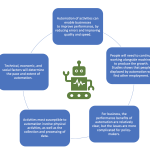Caregiving and work are increasingly intertwined in today’s workforce, impacting millions of employees across diverse sectors. This delicate balance of fulfilling professional responsibilities while caring for dependents—be it children, ill spouses, or aging parents—poses significant workforce challenges. The traditional structures of employment often fail to accommodate these multifaceted needs, leading to high turnover and low employee retention rates. To combat this, businesses must adopt holistic caregiver support policies and flexible work arrangements that recognize and facilitate the dual roles many workers embody. By doing so, companies not only enhance their bottom line but also tap into a broader pool of hidden workers who are eager to contribute but face barriers to employment.
In the contemporary job market, the intersection of professional commitments and personal caregiving responsibilities has become more pronounced. Many individuals are navigating the complexities of balancing their careers with the demands of family care, whether it involves managing children’s schedules or attending to elderly relatives. This scenario highlights the pressing need for innovative employee management strategies that prioritize caregiver welfare through supportive workplace cultures. Recognizing the significance of flexible work structures and targeted employee engagement initiatives can empower these hidden talents, who often remain sidelined due to restrictive employment practices. As organizations step forward to implement caregiver-friendly policies, they can enhance overall productivity and foster a more inclusive workforce.
Rethinking Employer Policies for Caregiving Support
In today’s workforce, millions of individuals balance their professional responsibilities with significant caregiving duties, making it imperative for employers to reevaluate their policies. Traditional work arrangements often fail to accommodate the diverse needs of caregivers, including parents managing children’s schedules or individuals caring for elderly relatives. Rigid work structures can lead to absenteeism, presenteeism, and ultimately job turnover, negatively impacting both employee morale and company productivity. To address these issues, businesses should consider implementing more flexible work arrangements that allow employees to meet their caregiving obligations while maintaining their professional commitments.
Additionally, caregiver support policies are essential in creating an inclusive work environment. Employers should not only acknowledge the existence of hidden workers—those who wish to return to work but face barriers due to caregiving responsibilities—but actively engage with them. By offering resources such as childcare assistance, eldercare programs, or even mental health support, employers can help alleviate the pressure on their employees. These supportive measures not only benefit those with caregiving responsibilities but also enhance employee retention strategies, fostering a loyal and productive workforce.
The Economic Impact of Caregiving on Workforce Participation
The costs associated with caregiving responsibilities extend beyond individual employees; they also significantly impact the economy. Studies show that caregiving is a major reason why workers leave their jobs or reduce their hours, leading to increased employee turnover rates. This turnover incurs hefty financial implications for organizations, often amounting to a loss of 25 to 35 percent of an employee’s annual salary during replacement and training. Furthermore, organizations that fail to recognize these hidden costs overlook a substantial risk to their operational efficiency and bottom line. By reassessing the economic ramifications of caregiving on workforce participation, companies can better understand the necessity of accommodating their employees’ needs.
Moreover, when companies enforce strict hiring practices that dismiss candidates with employment gaps due to caregiving, they eliminate valuable talent from the workforce. The loss of experienced workers not only affects productivity but also leaves a gap in the company’s knowledge base. Many caregivers possess unique skills and insights gained from their roles that can be tremendously beneficial in the workplace. By encouraging the return of these skilled workers through supportive policies, businesses can tap into a broader talent pool and address workforce challenges more effectively.
Promoting Flexible Work Arrangements to Support Caregivers
In light of the increasing number of caregivers in the workforce, it’s crucial that companies embrace flexible work arrangements. Offering options such as remote work, adjustable hours, and compressed workweeks can significantly ease the burdens faced by employees juggling caregiving responsibilities and professional duties. Employers who are willing to implement these changes often find that productivity improves—employees can focus better when they know they have the flexibility to manage personal obligations. This adaptability not only supports current staff but also enhances the company’s reputation, making it a more attractive place for prospective employees.
Creating a culture that prioritizes flexibility also helps reduce turnover, an ongoing challenge for many organizations. Studies have indicated that employees who feel their personal circumstances are respected demonstrate higher engagement and loyalty to their employers. Thus, flexible work arrangements serve as an effective employee retention strategy that can improve overall workforce morale. Employers are encouraged to communicate openly about these options, fostering an environment where workers feel comfortable discussing their caregiving challenges and finding solutions.
Understanding the Intersection of Caregiving and Workforce Challenges
As companies face growing workforce challenges, understanding the intersection of caregiving and employment is more critical than ever. With over 50% of workers shouldering caregiving duties, businesses must realize that traditional paradigms of employment are outdated. Workers with heavy caregiving responsibilities often face a unique set of hurdles, including the fear of being viewed as less committed, which can lead them to avoid discussing their situations with HR or management. Recognizing these complexities is essential for fostering a supportive employer-employee relationship.
Moreover, organizations must effectively analyze data related to absenteeism and employee turnover to identify patterns tied to caregiving issues. By leveraging insights from this data, companies can better understand how caregiving impacts their workforce and develop strategies to counteract its effects. Fostering an inclusive atmosphere where employees can freely share their caregiving challenges will lead to improved morale, greater job satisfaction, and a more resilient workforce—all crucial components in navigating the future of work.
Implementing Effective Employee Retention Strategies
In the context of workforce challenges, effective employee retention strategies are paramount for businesses seeking to mitigate turnover and enhance organizational performance. One of the most critical components of these strategies is recognizing and accommodating the caregiving needs of employees. Companies can take proactive measures by instituting caregiver support policies that provide resources, such as access to childcare services, family leave options, and mental health support. Such initiatives not only help employees manage their responsibilities but also demonstrate that the employer values and understands the challenges faced by their team.
Additionally, communication plays a key role in the successful execution of retention strategies. Employers need to establish clear lines of dialogue that invite employees to discuss their challenges openly. Regular feedback loops and performance reviews should include inquiries about the well-being of employees regarding their caregiving responsibilities. By fostering transparency and support, organizations can build trust, resulting in lower turnover rates and a more committed workforce. Ultimately, when employees feel heard and supported, they are more likely to engage creatively and productively in their roles.
Exploring the Role of Hidden Workers
Hidden workers, often defined as individuals who are skilled yet remain outside the traditional workforce due to caregiving obligations, present both a challenge and an opportunity for employers. This demographic includes a significant number of caregivers who have historically faced barriers to employment because of rigid company policies. Understanding the characteristics of hidden workers is crucial for businesses looking to expand their talent pool. Companies that prioritize the recruitment of these hidden workers can enhance workforce diversity and tap into a wealth of skills and experience that might otherwise go untapped.
Employers should implement targeted recruitment strategies designed to attract hidden workers. This could involve revising job descriptions and qualifications to reduce disqualifying factors, offering part-time or flexible work options, and creating an inclusive application process. By acknowledging and addressing the unique challenges faced by these individuals, organizations can build a more comprehensive talent strategy that not only addresses workforce shortages but also contributes positively to their reputation in the market. Companies that embrace this perspective may find themselves benefiting from a more loyal and diversified workforce.
Navigating the Complexities of Caregiving in the Workplace
Navigating the complexities of caregiving in the workplace requires a multifaceted approach that recognizes the diversity of employees’ experiences. From the ‘sandwich generation’ to single parents facing challenging circumstances, caregivers need employers to develop a keen understanding of their realities. Companies must adapt their policies to create an environment that supports both the workforce and business objectives. Initiatives such as training programs for managers on how to handle caregiving issues can create a bridge between employees’ needs and organizational expectations.
Employers should also invest in regular assessments of workplace culture and caregiver support initiatives. Gathering insights directly from employees about their unique challenges can provide organizations with the data needed to implement effective changes. Encouraging employee feedback and fostering an inclusive environment where workers feel valued can significantly enhance engagement and job satisfaction. Understanding and addressing the complexities of caregiving in the workplace is not just an operational necessity; it reflects a commitment to the well-being of employees and their families.
Creating a Proactive Approach to Caregiver Needs
Creating a proactive approach to addressing caregiver needs involves recognizing the long-term implications of failing to support this demographic. As the workforce continues to evolve, companies that adopt a forward-thinking stance on caregiver issues will be better positioned to compete in attracting and retaining talent. Proactive measures might include developing flexible work policies, offering health and wellness programs, and fostering an open dialogue between staff and management regarding caregiving responsibilities. By making these adaptations, organizations can create a culture of support that allows employees to thrive both at work and at home.
Additionally, organizations must continuously assess the effectiveness of their caregiver support policies and be willing to pivot as necessary. This could mean regularly surveying employees for feedback on existing programs and making improvements based on their responses. Such an ongoing commitment demonstrates to employees that their needs are being prioritized and that the organization genuinely cares about their well-being. As companies invest in the future of their workforce, they will reap the benefits of a more engaged and loyal team, ultimately driving performance and success.
Embracing Change for a Sustainable Workforce
To build a sustainable workforce in the face of evolving demographic trends and socioeconomic pressures, companies must be willing to embrace change. This entails not only implementing flexible work arrangements and caregiver support policies but also actively dismantling the barriers that prevent caregivers from contributing fully in the workforce. Employers should prioritize creating an environment that adapts to the needs of their employees, recognizing that caregiving responsibilities affect every worker at some point in their careers.
Additionally, organizations must leverage data to identify trends related to employee turnover and absenteeism, understanding that these metrics can often be tied to caregiving concerns. By being proactive in addressing these challenges, employers can build a resilient workforce that not only minimizes turnover costs but also maximizes employee satisfaction and productivity. Making a commitment to flexible, inclusive workplace practices will not only enhance employee well-being but also strengthen the overall stability and success of the organization.
Frequently Asked Questions
What are some common workforce challenges faced by caregivers in the workplace?
Caregivers often face significant workforce challenges, including inflexible work schedules, a lack of understanding from management regarding caregiving responsibilities, and the fear of job loss when requesting accommodations. These obstacles can lead to absenteeism and presenteeism, as caregivers navigate their responsibilities both at work and at home.
How can employers improve employee retention strategies for caregivers?
Employers can enhance employee retention strategies by implementing flexible work arrangements that accommodate the unique needs of caregivers. This can include options for remote work, adjustable schedules, and supportive caregiver policies that recognize and address the challenges faced by working caregivers.
What role do caregiver support policies play in workforce dynamics?
Caregiver support policies are essential in workforce dynamics as they help to create a more inclusive environment for caregivers. These policies can reduce turnover, improve employee morale, and ultimately lead to increased productivity by acknowledging and supporting the dual roles of employees who are also caregivers.
Why are flexible work arrangements important for managing caregiving and work responsibilities?
Flexible work arrangements are crucial for managing caregiving and work responsibilities because they allow employees to balance their professional obligations with personal caregiving duties. This flexibility can significantly decrease stress, improve job satisfaction, and reduce the likelihood of employees leaving the workforce.
How do hidden workers relate to employment in caregiving roles?
Hidden workers, including those with caregiving responsibilities, often face barriers in employment due to rigid hiring practices and a lack of recognition of their unique skills. By understanding and addressing the needs of these workers, employers can tap into a valuable talent pool that is often overlooked.
What impact do caregiving responsibilities have on employee absenteeism?
Caregiving responsibilities can greatly impact employee absenteeism as caregivers may need to take unplanned time off for family needs, such as medical appointments or emergencies. This can lead to increased absenteeism if employers do not implement supportive policies or flexible work arrangements that accommodate these situations.
How can employers create a supportive environment for working caregivers?
Employers can create a supportive environment for working caregivers by fostering open communication about caregiving responsibilities, implementing caregiver support policies, and offering flexible work arrangements. Additionally, training management to understand the challenges caregivers face can lead to a more empathetic workplace culture.
What are some strategies for improving the employment status of caregivers within the workforce?
To improve the employment status of caregivers within the workforce, companies can adopt inclusive hiring practices that do not penalize gaps in employment due to caregiving. Employers should also provide opportunities for workforce training and career development specifically aimed at caregivers to help them reintegrate into the job market.
What challenges do companies face in recognizing the economics of caregiving in the workplace?
Companies often struggle to recognize the economics of caregiving due to a disconnect between workforce data and employee experiences. Many organizations do not conduct exit interviews or gather feedback on caregiver needs, leading to a lack of understanding about the costs associated with caregiver turnover and absenteeism.
How can technology assist in addressing workforce challenges related to caregiving?
Technology can assist in addressing workforce challenges related to caregiving by enabling remote work options, facilitating flexible scheduling, and offering tools for managing caregiving responsibilities alongside work. Additionally, data analytics can help employers track absenteeism trends and identify areas for improvement in support for caregivers.
| Key Point | Details |
|---|---|
| Caregiving Challenges | Millions of American workers face the dual pressures of work commitments and caregiving responsibilities for children, spouses, or aging parents. |
| Impact on Workforce | Rigid hiring policies and inflexible work rules lead to high turnover rates and lost productivity as caregiving conflicts compel many to exit the workforce. |
| Recruitment Issues | Employers often overlook gaps in employment history related to caregiving, disproportionately affecting women who are primary caregivers. |
| Costs of Caregiver Turnover | Replacing workers due to caregiving conflicts can cost 25-100% of an employee’s annual salary, impacting company resources significantly. |
| Need for Policy Reassessment | Companies must adapt hiring processes and support systems to better accommodate caregivers, recognizing their value and potential contributions. |
Summary
Caregiving and work are interconnected issues that millions of Americans grapple with daily. As the workforce evolves, it becomes clear that companies must reassess their policies to support employees who are also caregivers. By implementing flexible work practices and understanding the challenges faced by these individuals, employers can not only retain talent but also enhance overall productivity and job satisfaction. An inclusive approach to caregiving in the workplace is essential for fostering a committed, engaged workforce.










